PAOC Spotlights
An Ocean of Curiosity
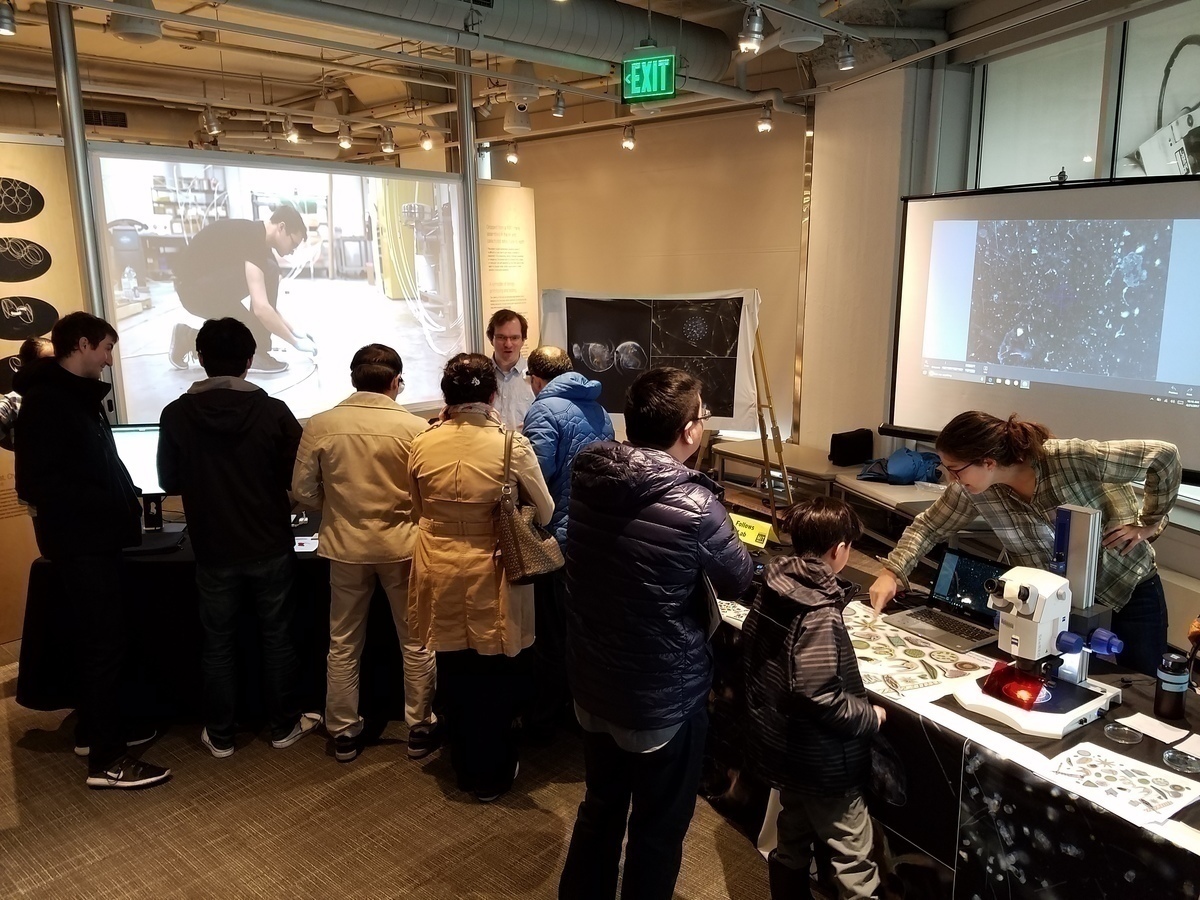
MIT oceanographers explore Earth’s seas with the Boston community for the 2017 Cambridge Science Festival at the MIT Museum.
Last month, oceanographers, meteorologists and climate researchers from the Program in Atmospheres, Oceans and Climate (PAOC) in MIT's Department of Earth, Atmospheric and Planetary Sciences (EAPS) packed up their instruments and headed to the MIT Museum to celebrate Earth Day and foster curiosity about the wonders of the oceans with the Boston community. This popular, annual event, “Celebrating the Earth,” is part of the Cambridge Science Festival, which offers a variety of scientific lectures, exhibitions, workshops, interactive displays and attractions around Boston. The festival’s public outreach is designed to ignite the imagination about science for enthusiasts aged 9 to 99 – inviting exploration and stimulating inquisitiveness about what Earth research can tell us. For MIT’s fifth year of participation, they joined groups from Woods Hole Oceanographic Institute, the Harvard/MIT Center for Chemical Innovation and others to share the latest advances in oceanographic and meteorological research, data collection and nautical explorations.
About 500 visitors, some from as far as Turkey, France and New Zealand, attended the daylong exhibition, excited to see what MIT has been working on.
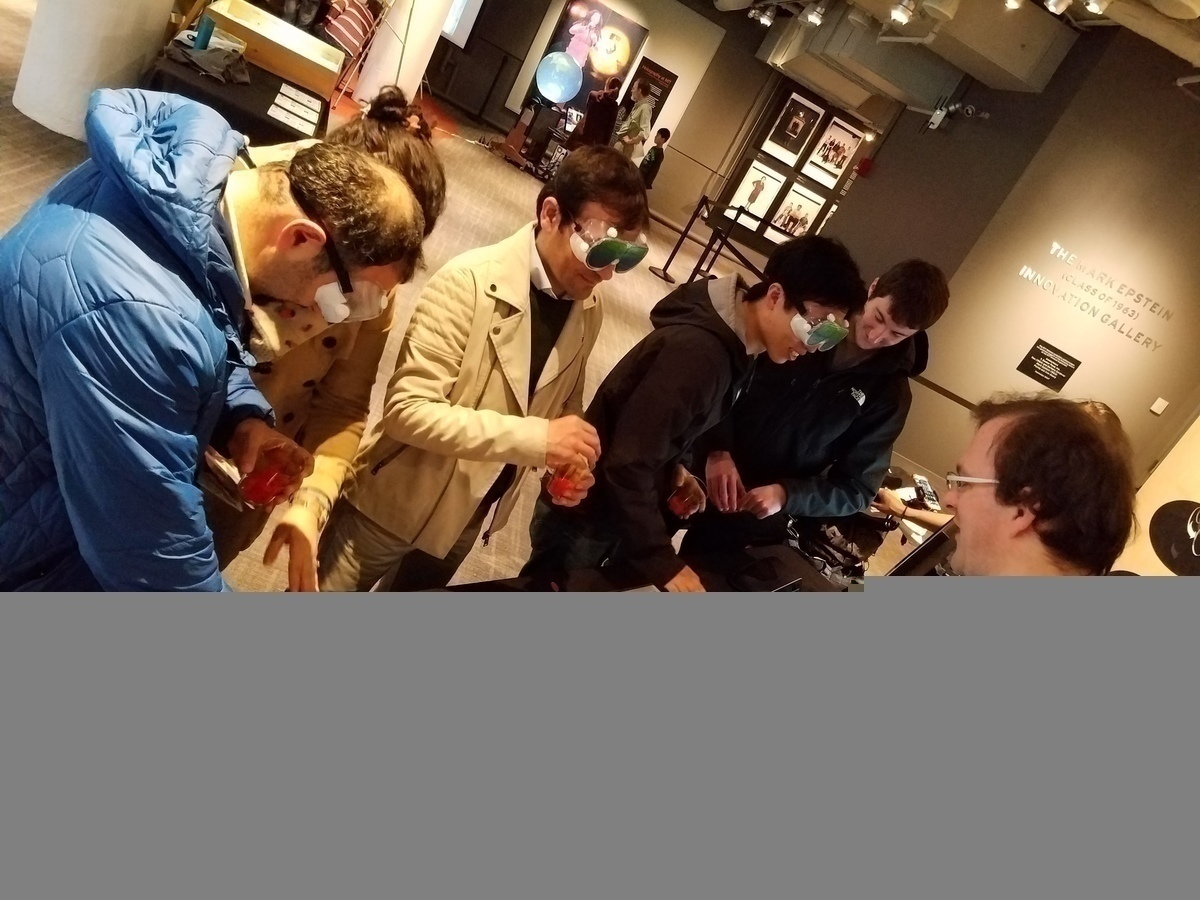 Professor Mick Follows’ group helped attendees focus their attentions on the ecological microcosm contained in a drop of Charles River water. Using a compound light microscope with a projector, postdoc Emily Zakem and researcher Anne Willem Omta invited guests to observe interactions between dinoflagellates, daphnia, phytoplankton, copepods and other marine organisms captured from the river both the day and week before.
Professor Mick Follows’ group helped attendees focus their attentions on the ecological microcosm contained in a drop of Charles River water. Using a compound light microscope with a projector, postdoc Emily Zakem and researcher Anne Willem Omta invited guests to observe interactions between dinoflagellates, daphnia, phytoplankton, copepods and other marine organisms captured from the river both the day and week before.
Drawing a large crowd, postdoc Jon Lauderdale, along with principal research engineer Chris Hill and postdoc Keisuke Inomura, played a “fishing” game with visitors to help explain food abundance and marine system principles put forth by ecologist Crawford Stanley (Buzz) Holling. Blindfolded guests behaved like predators, “hunting” for prey at timed intervals. Resembling the claw crane arcade game, guests dropped their hand down onto a placemat representing the ocean, hoping to catch a Swedish Fish aka “prey.” Each time a fish was caught, another was placed on the mat to keep the number of prey constant throughout the game. Some players had more prey on their placemat, others had a few. The MIT oceanographers helped plot the number of Swedish Fish caught against the number of fish always available for hunting. In this way, guests had fun learning about the relationship between prey abundance and consumption by predators.
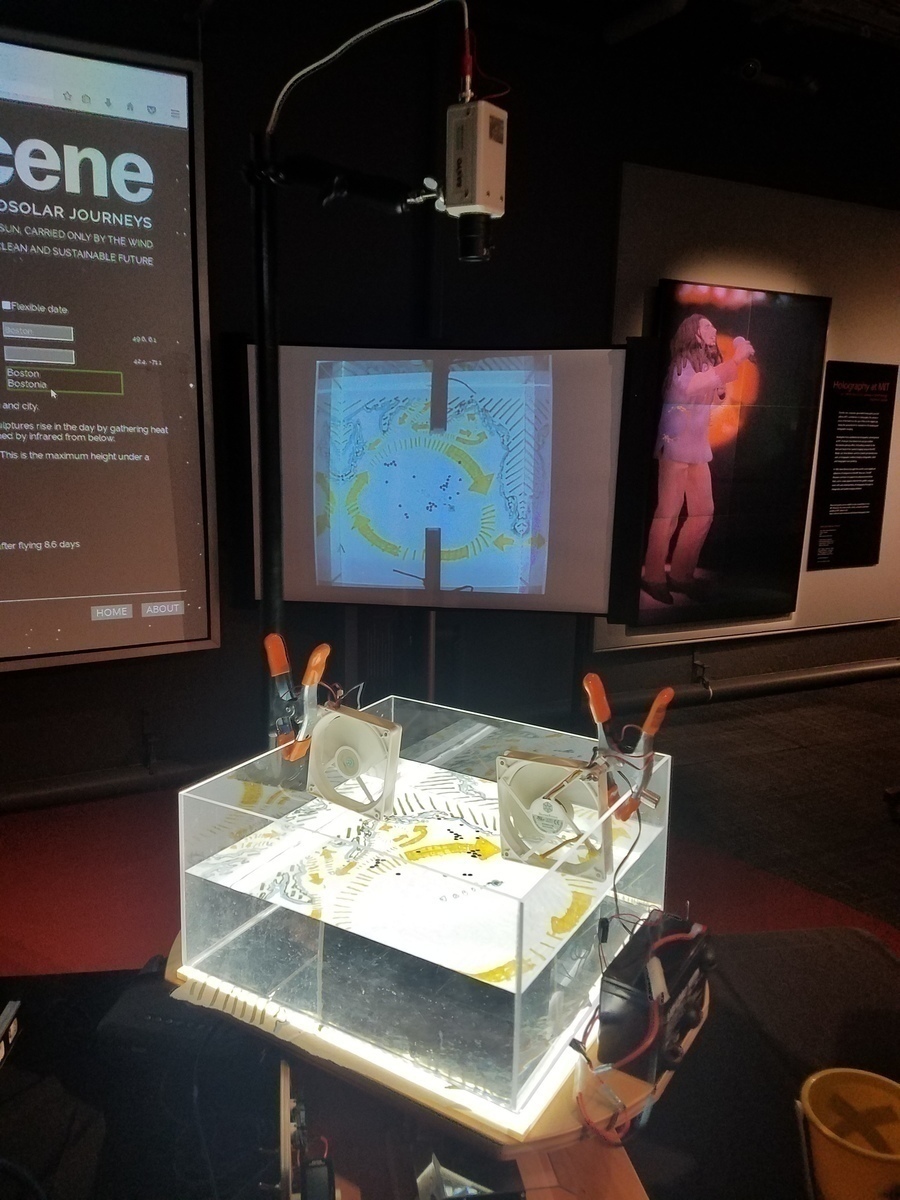 Back by popular demand was the Weather in a Tank demonstration — developed by oceanographer John Marshall’s group — illustrating the physics around ocean gyre circulation. Assisted by graduate students Brian Green, Mukund Gupta, and postdocs Gianluca Meneghello, Eduardo Moreno-Chamarro and Ed Doddridge, Marshall set up a tank of water on a rotating turntable and positioned fans blowing on the water’s surface. This setup simulated the air and ocean currents that drive the Pacific Ocean gyre, which is one of several gyres located around the world.
Back by popular demand was the Weather in a Tank demonstration — developed by oceanographer John Marshall’s group — illustrating the physics around ocean gyre circulation. Assisted by graduate students Brian Green, Mukund Gupta, and postdocs Gianluca Meneghello, Eduardo Moreno-Chamarro and Ed Doddridge, Marshall set up a tank of water on a rotating turntable and positioned fans blowing on the water’s surface. This setup simulated the air and ocean currents that drive the Pacific Ocean gyre, which is one of several gyres located around the world.
Gyres like this are known to trap garbage from the land and marine debris, so much that this one has earned the nickname the “Great Pacific Garbage Patch.” In order to visually describe the physics at play, audiences dropped paper bits into the swirling water, observing as they made their way from the edge of the tank into the middle. An overhead camera locked to the turntable, and its image projected onto a screen, enabled audiences to see the effect from within the spinning framework. Meanwhile, the Marshall group fielded questions ranging from the effect of the Coriolis force and air currents on ocean currents to problems of marine microplastics and cleanup strategies.
Zooming further out from the Earth’s surface, guests gazed in wonder at a large computerized sphere displaying global ocean and atmospheric currents, weather patterns, climate proxies and more on the iGlobe. Operated by MIT oceanographer and iGlobe consultant Glenn Flierl and lab technician Bill McKenna, the iGlobe is able to project over 250 movies using near real-time data to show various Earth, oceanic and atmospheric processes over time. Audiences comprised of young children and their parents gathered around the iGlobe, forming a self-organized classroom, attentive to McKenna’s explanations of atmosphere and oceans interactions and the formations weather phenomena.
The NSF-funded iGlobe/MIT project, which presents a graphics-rich, customizable tool for climate education and outreach, is also often used in conjunction with the “Aerocene” project, exploring emissions-free travel around the world on air currents.
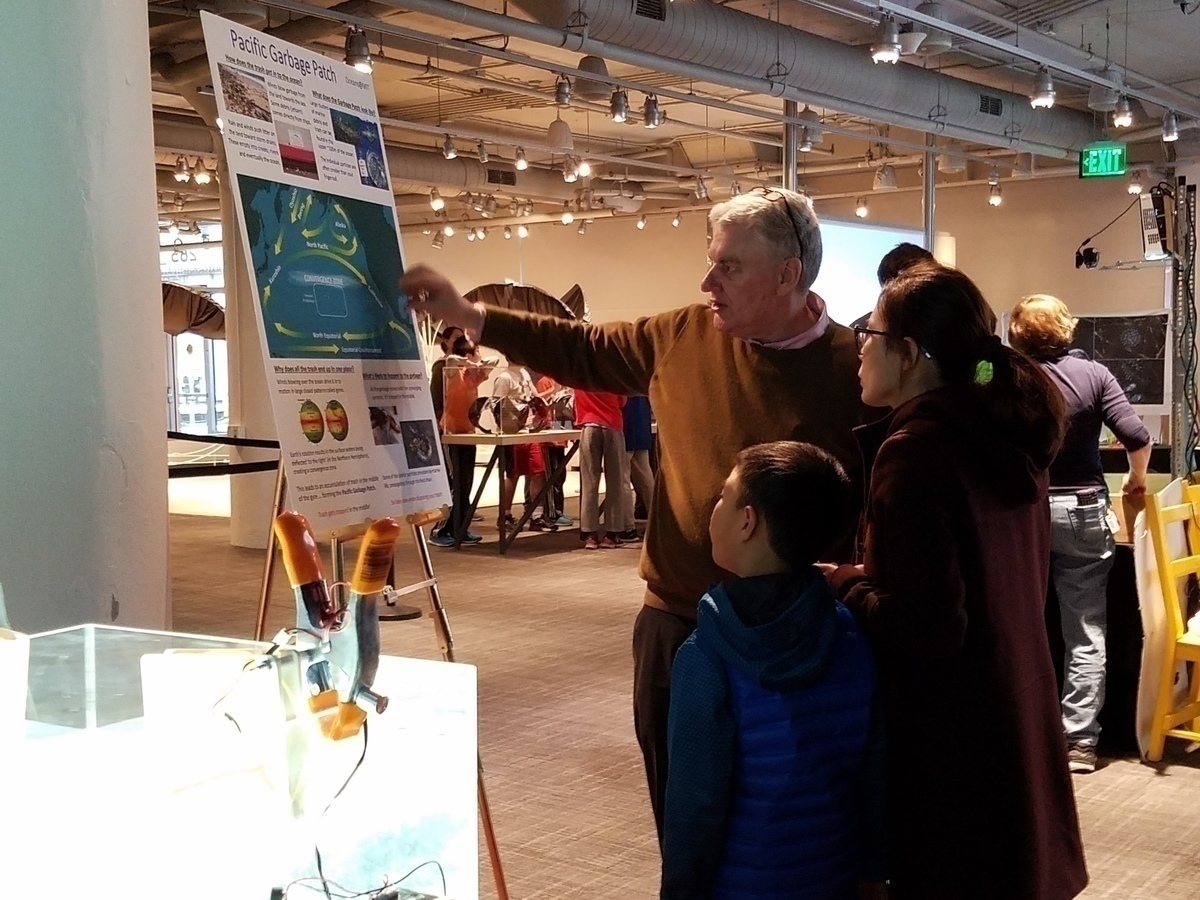
Primed for conceptual thinking about atmospheric circulations, “Celebrating the Earth” audiences wandered over to MIT’s “Aerocene” display — an artistic project developed by MIT CAST visiting artist Tomás Saraceno and the Aerocene Foundation in collaboration with MIT EAPS’ scientists Glenn Flierl, Bill McKenna and Lodovica Illari. Imagining an epoch beyond our current one, the Anthropocene, where there is a need for fossil-free transportation, EAPS researchers employed their knowledge of atmospheric physics and meteorological principles to develop software, visualizations, and an interactive interface capable of simulating zero-emissions flight. Inspired work done by France’s space agency CNES, “Aerocene” achieves this with balloon-like structures, kept afloat in the troposphere and stratosphere by solar and infrared radiation. The group incorporates atmospheric data into their global computer model to map the hypothetical flight paths that these balloon structures could take depending on when and where they are launched.
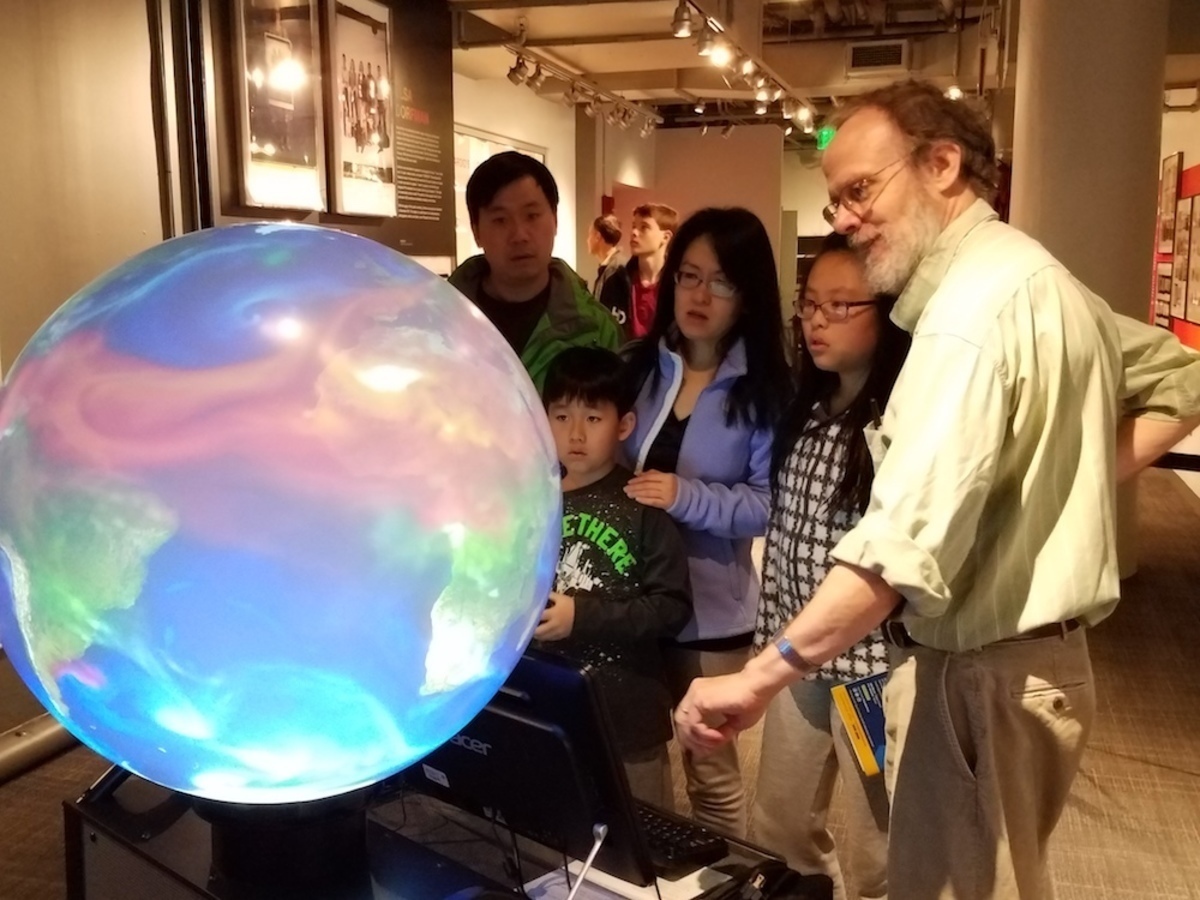 Using the interface, Illari invited guests to “launch” virtual balloons in the model that would follow trajectories dictated by atmospheric conditions and wind currents. She challenged them to initiate virtual journeys at various altitudes, locations, and days in the model, with the goal of arriving at a particular destination. This activity was a crowd favorite.
Using the interface, Illari invited guests to “launch” virtual balloons in the model that would follow trajectories dictated by atmospheric conditions and wind currents. She challenged them to initiate virtual journeys at various altitudes, locations, and days in the model, with the goal of arriving at a particular destination. This activity was a crowd favorite.
In addition to MIT’s exhibits, Woods Hole Oceanographic Institution (WHOI) brought a Remote Environmental Monitoring UnitS, or REMUS vehicle, which is a low-cost autonomous underwater vehicle (AUV) that investigates the lives of marine organisms and houses a camera used to collect images of them. Footage from its SharkCam and TurtleCam were shown on a nearby screen. The ocean-themed attractions continued upstairs on the MIT Museum’s second floor with displays of nautical flags and maps, rope-tying demonstrations, ship design and carving, navigation and chartering, and underwater VR.
Throughout the day, guests of the event boldly expressed their curiosity for the subject matter and their appreciation to have the opportunity to interact with MIT oceanographers, learn more about their work, and potentially follow in their footsteps as the next generation of oceanographers. Many summed up their experience of the day with, “That was cool; thank you!”
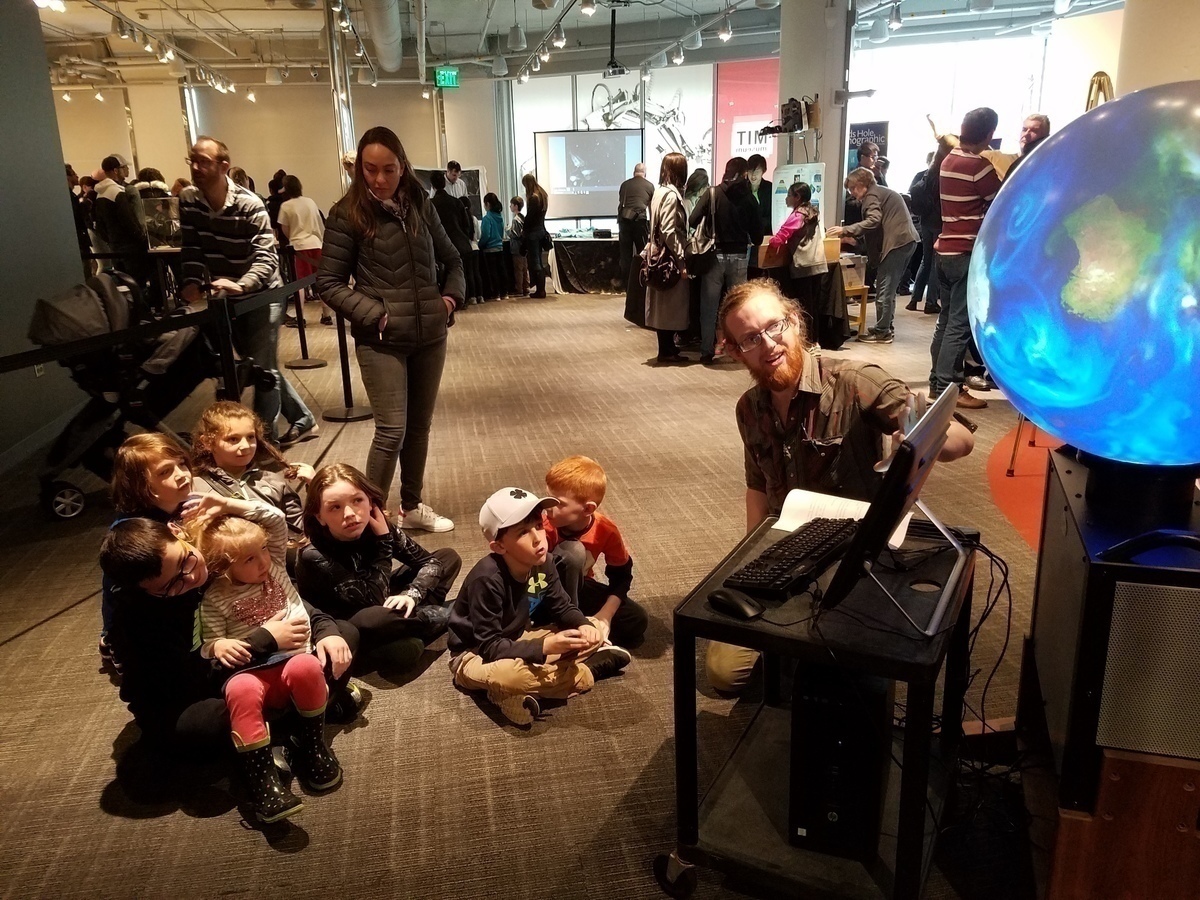
Participation was supported by a National Science Foundation (NSF) grant from Frontiers in Earth System Dynamics (FESD).
See more photos from the event and read about previous Cambridge Science Festival events on Oceans@MIT.